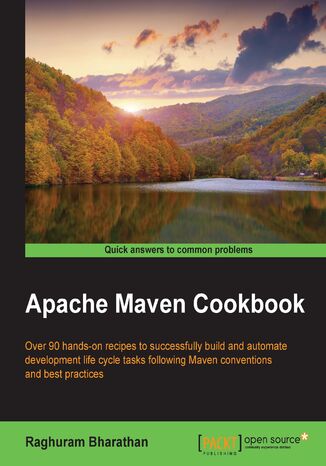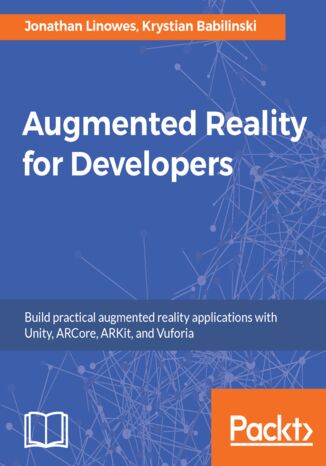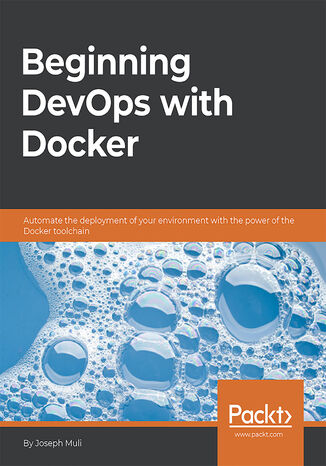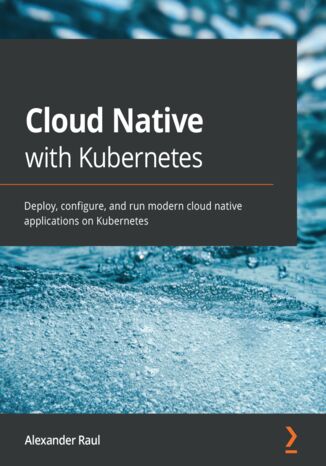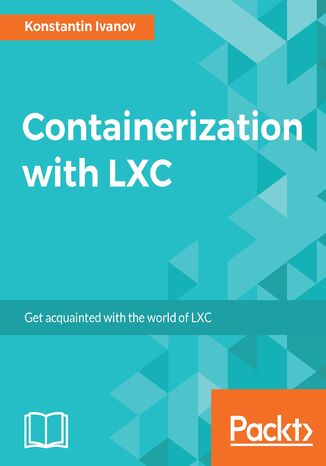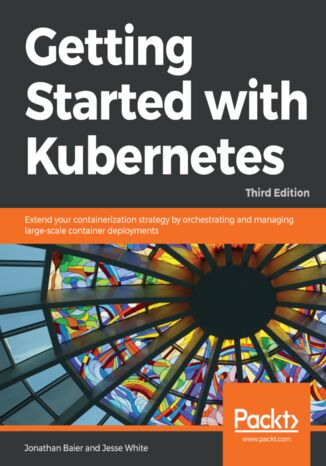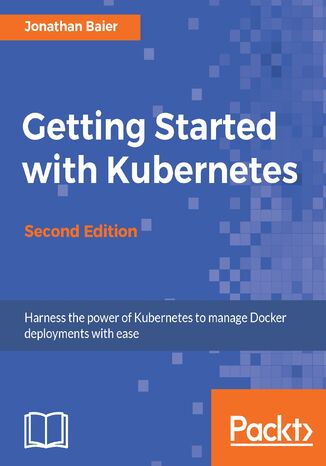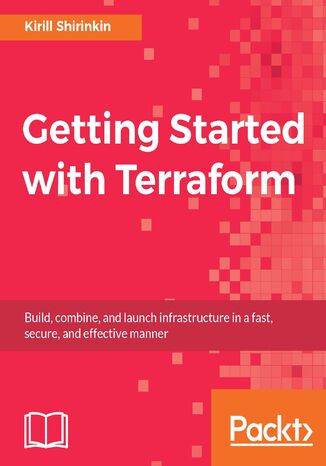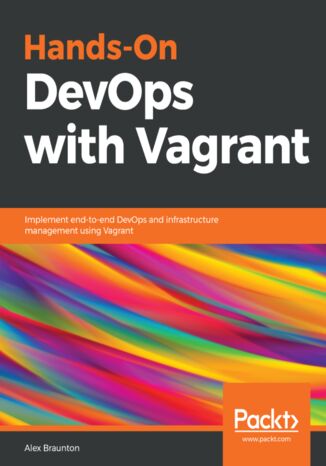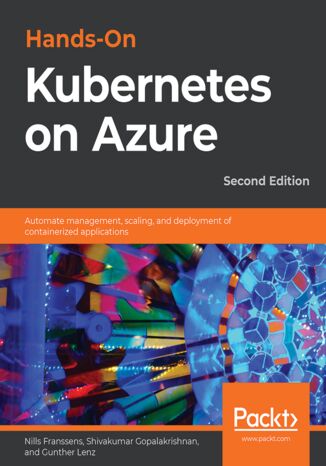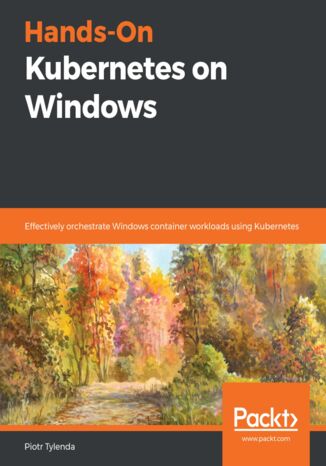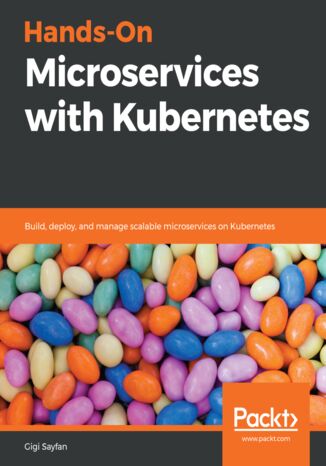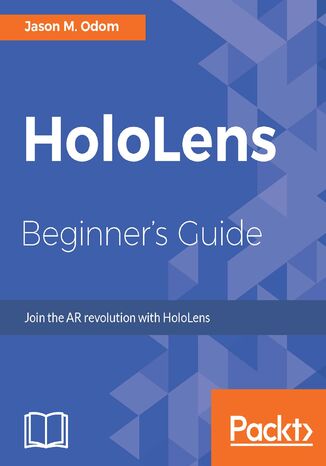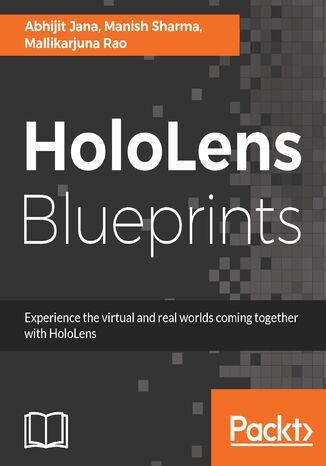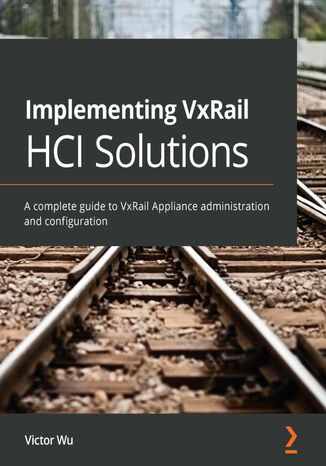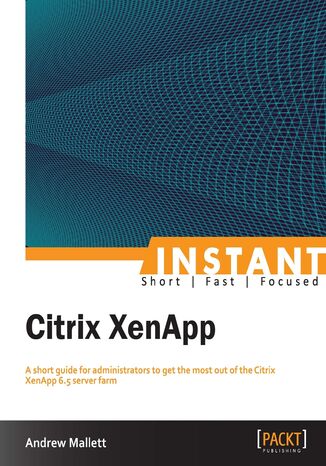Kategorie
Ebooki
-
Biznes i ekonomia
- Bitcoin
- Bizneswoman
- Coaching
- Controlling
- E-biznes
- Ekonomia
- Finanse
- Giełda i inwestycje
- Kompetencje osobiste
- Komputer w biurze
- Komunikacja i negocjacje
- Mała firma
- Marketing
- Motywacja
- Multimedialne szkolenia
- Nieruchomości
- Perswazja i NLP
- Podatki
- Polityka społeczna
- Poradniki
- Prezentacje
- Przywództwo
- Public Relation
- Raporty, analizy
- Sekret
- Social Media
- Sprzedaż
- Start-up
- Twoja kariera
- Zarządzanie
- Zarządzanie projektami
- Zasoby ludzkie (HR)
-
Dla dzieci
-
Dla młodzieży
-
Edukacja
-
Encyklopedie, słowniki
-
E-prasa
- Architektura i wnętrza
- Biznes i Ekonomia
- Dom i ogród
- E-Biznes
- Finanse
- Finanse osobiste
- Firma
- Fotografia
- Informatyka
- Kadry i płace
- Komputery, Excel
- Księgowość
- Kultura i literatura
- Naukowe i akademickie
- Ochrona środowiska
- Opiniotwórcze
- Oświata
- Podatki
- Podróże
- Psychologia
- Religia
- Rolnictwo
- Rynek książki i prasy
- Transport i Spedycja
- Zdrowie i uroda
-
Historia
-
Informatyka
- Aplikacje biurowe
- Bazy danych
- Bioinformatyka
- Biznes IT
- CAD/CAM
- Digital Lifestyle
- DTP
- Elektronika
- Fotografia cyfrowa
- Grafika komputerowa
- Gry
- Hacking
- Hardware
- IT w ekonomii
- Pakiety naukowe
- Podręczniki szkolne
- Podstawy komputera
- Programowanie
- Programowanie mobilne
- Serwery internetowe
- Sieci komputerowe
- Start-up
- Systemy operacyjne
- Sztuczna inteligencja
- Technologia dla dzieci
- Webmasterstwo
-
Inne
-
Języki obce
-
Kultura i sztuka
-
Lektury szkolne
-
Literatura
- Antologie
- Ballada
- Biografie i autobiografie
- Dla dorosłych
- Dramat
- Dzienniki, pamiętniki, listy
- Epos, epopeja
- Esej
- Fantastyka i science-fiction
- Felietony
- Fikcja
- Humor, satyra
- Inne
- Klasyczna
- Kryminał
- Literatura faktu
- Literatura piękna
- Mity i legendy
- Nobliści
- Nowele
- Obyczajowa
- Okultyzm i magia
- Opowiadania
- Pamiętniki
- Podróże
- Poemat
- Poezja
- Polityka
- Popularnonaukowa
- Powieść
- Powieść historyczna
- Proza
- Przygodowa
- Publicystyka
- Reportaż
- Romans i literatura obyczajowa
- Sensacja
- Thriller, Horror
- Wywiady i wspomnienia
-
Nauki przyrodnicze
-
Nauki społeczne
-
Podręczniki szkolne
-
Popularnonaukowe i akademickie
- Archeologia
- Bibliotekoznawstwo
- Filmoznawstwo
- Filologia
- Filologia polska
- Filozofia
- Finanse i bankowość
- Geografia
- Gospodarka
- Handel. Gospodarka światowa
- Historia i archeologia
- Historia sztuki i architektury
- Kulturoznawstwo
- Lingwistyka
- Literaturoznawstwo
- Logistyka
- Matematyka
- Medycyna
- Nauki humanistyczne
- Pedagogika
- Pomoce naukowe
- Popularnonaukowa
- Pozostałe
- Psychologia
- Socjologia
- Teatrologia
- Teologia
- Teorie i nauki ekonomiczne
- Transport i spedycja
- Wychowanie fizyczne
- Zarządzanie i marketing
-
Poradniki
-
Poradniki do gier
-
Poradniki zawodowe i specjalistyczne
-
Prawo
- BHP
- Historia
- Kodeks drogowy. Prawo jazdy
- Nauki prawne
- Ochrona zdrowia
- Ogólne, kompendium wiedzy
- Podręczniki akademickie
- Pozostałe
- Prawo budowlane i lokalowe
- Prawo cywilne
- Prawo finansowe
- Prawo gospodarcze
- Prawo gospodarcze i handlowe
- Prawo karne
- Prawo karne. Przestępstwa karne. Kryminologia
- Prawo międzynarodowe
- Prawo międzynarodowe i zagraniczne
- Prawo ochrony zdrowia
- Prawo oświatowe
- Prawo podatkowe
- Prawo pracy i ubezpieczeń społecznych
- Prawo publiczne, konstytucyjne i administracyjne
- Prawo rodzinne i opiekuńcze
- Prawo rolne
- Prawo socjalne, prawo pracy
- Prawo Unii Europejskiej
- Przemysł
- Rolne i ochrona środowiska
- Słowniki i encyklopedie
- Zamówienia publiczne
- Zarządzanie
-
Przewodniki i podróże
- Afryka
- Albumy
- Ameryka Południowa
- Ameryka Środkowa i Północna
- Australia, Nowa Zelandia, Oceania
- Austria
- Azja
- Bałkany
- Bliski Wschód
- Bułgaria
- Chiny
- Chorwacja
- Czechy
- Dania
- Egipt
- Europa
- Francja
- Góry
- Grecja
- Hiszpania
- Holandia
- Islandia
- Litwa
- Mapy, Plany miast, Atlasy
- Miniprzewodniki
- Niemcy
- Norwegia
- Podróże aktywne
- Polska
- Portugalia
- Pozostałe
- Rosja
- Rumunia
- Słowacja
- Słowenia
- Szwajcaria
- Szwecja
- Świat
- Turcja
- Ukraina
- Węgry
- Wielka Brytania
- Włochy
-
Psychologia
- Filozofie życiowe
- Kompetencje psychospołeczne
- Komunikacja międzyludzka
- Mindfulness
- Ogólne
- Perswazja i NLP
- Psychologia akademicka
- Psychologia duszy i umysłu
- Psychologia pracy
- Relacje i związki
- Rodzicielstwo i psychologia dziecka
- Rozwiązywanie problemów
- Rozwój intelektualny
- Sekret
- Seksualność
- Uwodzenie
- Wygląd i wizerunek
- Życiowe filozofie
-
Religia
-
Sport, fitness, diety
-
Technika i mechanika
Audiobooki
-
Biznes i ekonomia
- Bitcoin
- Bizneswoman
- Coaching
- Controlling
- E-biznes
- Ekonomia
- Finanse
- Giełda i inwestycje
- Kompetencje osobiste
- Komunikacja i negocjacje
- Mała firma
- Marketing
- Motywacja
- Nieruchomości
- Perswazja i NLP
- Podatki
- Poradniki
- Prezentacje
- Przywództwo
- Public Relation
- Sekret
- Social Media
- Sprzedaż
- Start-up
- Twoja kariera
- Zarządzanie
- Zarządzanie projektami
- Zasoby ludzkie (HR)
-
Dla dzieci
-
Dla młodzieży
-
Edukacja
-
Encyklopedie, słowniki
-
Historia
-
Informatyka
-
Inne
-
Języki obce
-
Kultura i sztuka
-
Lektury szkolne
-
Literatura
- Antologie
- Ballada
- Biografie i autobiografie
- Dla dorosłych
- Dramat
- Dzienniki, pamiętniki, listy
- Epos, epopeja
- Esej
- Fantastyka i science-fiction
- Felietony
- Fikcja
- Humor, satyra
- Inne
- Klasyczna
- Kryminał
- Literatura faktu
- Literatura piękna
- Mity i legendy
- Nobliści
- Nowele
- Obyczajowa
- Okultyzm i magia
- Opowiadania
- Pamiętniki
- Podróże
- Poezja
- Polityka
- Popularnonaukowa
- Powieść
- Powieść historyczna
- Proza
- Przygodowa
- Publicystyka
- Reportaż
- Romans i literatura obyczajowa
- Sensacja
- Thriller, Horror
- Wywiady i wspomnienia
-
Nauki przyrodnicze
-
Nauki społeczne
-
Popularnonaukowe i akademickie
-
Poradniki
-
Poradniki zawodowe i specjalistyczne
-
Prawo
-
Przewodniki i podróże
-
Psychologia
- Filozofie życiowe
- Komunikacja międzyludzka
- Mindfulness
- Ogólne
- Perswazja i NLP
- Psychologia akademicka
- Psychologia duszy i umysłu
- Psychologia pracy
- Relacje i związki
- Rodzicielstwo i psychologia dziecka
- Rozwiązywanie problemów
- Rozwój intelektualny
- Sekret
- Seksualność
- Uwodzenie
- Wygląd i wizerunek
- Życiowe filozofie
-
Religia
-
Sport, fitness, diety
-
Technika i mechanika
Kursy video
-
Bazy danych
-
Big Data
-
Biznes i ekonomia
-
Cyberbezpieczeństwo
-
Data Science
-
DevOps
-
Dla dzieci
-
Elektronika
-
Grafika/Wideo/CAX
-
Gry
-
Microsoft Office
-
Narzędzia programistyczne
-
Programowanie
-
Rozwój osobisty
-
Sieci komputerowe
-
Systemy operacyjne
-
Testowanie oprogramowania
-
Urządzenia mobilne
-
UX/UI
-
Web development
Podcasty
- Ebooki
- Systemy operacyjne
- Wirtualizacja
Wirtualizacja
Jonathan Linowes, Krystian Babilinski
Augmented Reality brings with it a set of challenges that are unseen and unheard of for traditional web and mobile developers. This book is your gateway to Augmented Reality development—not a theoretical showpiece for your bookshelf, but a handbook you will keep by your desk while coding and architecting your first AR app and for years to come.The book opens with an introduction to Augmented Reality, including markets, technologies, and development tools. You will begin by setting up your development machine for Android, iOS, and Windows development, learning the basics of using Unity and the Vuforia AR platform as well as the open source ARToolKit and Microsoft Mixed Reality Toolkit. You will also receive an introduction to Apple's ARKit and Google's ARCore! You will then focus on building AR applications, exploring a variety of recognition targeting methods. You will go through multiple complete projects illustrating key market sectors including business marketing, education, industrial training, and gaming. By the end of the book, you will have gained the necessary knowledge to make quality content appropriate for a range of AR devices, platforms, and intended uses.
Making sure that your application runs across different systems as intended is quickly becoming a standard development requirement. With Docker, you can ensure that what you build will behave the way you expect it to, regardless of where it's deployed. By guiding you through Docker from start to finish (from installation, to the Docker Registry, all the way through to working with Docker Swarms), we’ll equip you with the skills you need to migrate your workflow to Docker with complete confidence.
Kubernetes is a modern cloud native container orchestration tool and one of the most popular open source projects worldwide. In addition to the technology being powerful and highly flexible, Kubernetes engineers are in high demand across the industry.This book is a comprehensive guide to deploying, securing, and operating modern cloud native applications on Kubernetes. From the fundamentals to Kubernetes best practices, the book covers essential aspects of configuring applications. You’ll even explore real-world techniques for running clusters in production, tips for setting up observability for cluster resources, and valuable troubleshooting techniques. Finally, you’ll learn how to extend and customize Kubernetes, as well as gaining tips for deploying service meshes, serverless tooling, and more on your cluster.By the end of this Kubernetes book, you’ll be equipped with the tools you need to confidently run and extend modern applications on Kubernetes.
Containerization with LXC. Build, manage, and configure Linux containers
In recent years, containers have gained wide adoption by businesses running a variety of application loads. This became possible largely due to the advent of kernel namespaces and better resource management with control groups (cgroups). Linux containers (LXC) are a direct implementation of those kernel features that provide operating system level virtualization without the overhead of a hypervisor layer. This book starts by introducing the foundational concepts behind the implementation of LXC, then moves into the practical aspects of installing and configuring LXC containers. Moving on, you will explore container networking, security, and backups. You will also learn how to deploy LXC with technologies like Open Stack and Vagrant. By the end of the book, you will have a solid grasp of how LXC is implemented and how to run production applications in a highly available and scalable way.
Kubernetes has continued to grow and achieve broad adoption across various industries, helping you to orchestrate and automate container deployments on a massive scale.Based on the recent release of Kubernetes 1.12, Getting Started with Kubernetes gives you a complete understanding of how to install a Kubernetes cluster. The book focuses on core Kubernetes constructs, such as pods, services, replica sets, replication controllers, and labels. You will understand cluster-level networking in Kubernetes, and learn to set up external access to applications running in the cluster. As you make your way through the book, you'll understand how to manage deployments and perform updates with minimal downtime. In addition to this, you will explore operational aspects of Kubernetes , such as monitoring and logging, later moving on to advanced concepts such as container security and cluster federation. You'll get to grips with integrating your build pipeline and deployments within a Kubernetes cluster, and be able to understand and interact with open source projects. In the concluding chapters, you'll orchestrate updates behind the scenes, avoid downtime on your cluster, and deal with underlying cloud provider instability within your cluster.By the end of this book, you'll have a complete understanding of the Kubernetes platform and will start deploying applications on it.
Kubernetes has continued to grow and achieve broad adoption across various industries, helping you to orchestrate and automate container deployments on a massive scale.This book will give you a complete understanding of Kubernetes and how to get a cluster up and running. You will develop an understanding of the installation and configuration process. The book will then focus on the core Kubernetes constructs such as pods, services, replica sets, replication controllers, and labels. You will also understand how cluster level networking is done in Kubernetes. The book will also show you how to manage deployments and perform updates with minimal downtime. Additionally, you will learn about operational aspects of Kubernetes such as monitoring and logging. Advanced concepts such as container security and cluster federation will also be covered. Finally, you will learn about the wider Kubernetes ecosystem with OCP, CoreOS, and Tectonic and explore the third-party extensions and tools that can be used with Kubernetes.By the end of the book, you will have a complete understanding of the Kubernetes platform and will start deploying applications on it.
Getting Started with Terraform. Infrastructure automation made easy
Terraform is a tool used to efficiently build, configure, and improve production infrastructure. It can manage existing infrastructure as well as create custom in-house solutions. This book shows you when and how to implement infrastructure as a code practices with Terraform. It covers everything necessary to set up complete management of infrastructure with Terraform, starting with the basics of using providers and resources. This book is a comprehensive guide that begins with very small infrastructure templates and takes you all the way to managing complex systems, all using concrete examples that evolve over the course of the book. It finishes with the complete workflow of managing a production infrastructure as code – this is achieved with the help of version control and continuous integration. At the end of this book, you will be familiar with advanced techniques such as multi-provider support and multiple remote modules.
Hands-On DevOps with Vagrant teaches you how to use Vagrant as a powerful DevOps tool and gives an overview of how it fits into the DevOps landscape. You will learn how to install VirtualBox and Vagrant in Windows, macOS, and Linux. You will then move on to understanding Vagrant commands, discovering its boxes and Vagrant Cloud.After getting to grips with the basics, the next set of chapters helps you to understand how to configure Vagrant, along with networking. You will explore multimachine, followed by studying how to create multiple environments and the communication between them. In addition to this, you will cover concepts such as Vagrant plugins and file syncing.The last set of chapters provides insights into provisioning shell scripts, also guiding you in how to use Vagrant with configuration management tools such as Chef, Ansible, Docker, Puppet, and Salt.By the end of this book, you will have grasped Vagrant’s features and how to use them for your benefit with the help of tips and tricks.
Nills Franssens, Shivakumar Gopalakrishnan, Gunther Lenz
From managing versioning efficiently to improving security and portability, technologies such as Kubernetes and Docker have greatly helped cloud deployments and application development.Starting with an introduction to Docker, Kubernetes, and Azure Kubernetes Service (AKS), this book will guide you through deploying an AKS cluster in different ways. You’ll then explore the Azure portal by deploying a sample guestbook application on AKS and installing complex Kubernetes apps using Helm. With the help of real-world examples, you'll also get to grips with scaling your application and cluster. As you advance, you'll understand how to overcome common challenges in AKS and secure your application with HTTPS and Azure AD (Active Directory). Finally, you’ll explore serverless functions such as HTTP triggered Azure functions and queue triggered functions.By the end of this Kubernetes book, you’ll be well-versed with the fundamentals of Azure Kubernetes Service and be able to deploy containerized workloads on Microsoft Azure with minimal management overhead.
Hands-On Kubernetes on Windows. Effectively orchestrate Windows container workloads using Kubernetes
With the adoption of Windows containers in Kubernetes, you can now fully leverage the flexibility and robustness of the Kubernetes container orchestration system in the Windows ecosystem. This support will enable you to create new Windows applications and migrate existing ones to the cloud-native stack with the same ease as for Linux-oriented cloud applications.This practical guide takes you through the key concepts involved in packaging Windows-distributed applications into containers and orchestrating these using Kubernetes. You'll also understand the current limitations of Windows support in Kubernetes. As you advance, you'll gain hands-on experience deploying a fully functional hybrid Linux/Windows Kubernetes cluster for development, and explore production scenarios in on-premises and cloud environments, such as Microsoft Azure Kubernetes Service.By the end of this book, you'll be well-versed with containerization, microservices architecture, and the critical considerations for running Kubernetes in production environments successfully.
Kubernetes is among the most popular open source platforms for automating the deployment, scaling, and operations of application containers across clusters of hosts, providing a container-centric infrastructure.Hands-On Microservices with Kubernetes starts by providing you with in-depth insights into the synergy between Kubernetes and microservices. You will learn how to use Delinkcious, which will serve as a live lab throughout the book to help you understand microservices and Kubernetes concepts in the context of a real-world application. Next, you will get up to speed with setting up a CI/CD pipeline and configuring microservices using Kubernetes ConfigMaps. As you cover later chapters, you will gain hands-on experience in securing microservices and implementing REST, gRPC APIs, and a Delinkcious data store. In addition to this, you’ll explore the Nuclio project, run a serverless task on Kubernetes, and manage and implement data-intensive tests. Toward the concluding chapters, you’ll deploy microservices on Kubernetes and learn to maintain a well-monitored system. Finally, you’ll discover the importance of service meshes and how to incorporate Istio into the Delinkcious cluster. By the end of this book, you’ll have gained the skills you need to implement microservices on Kubernetes with the help of effective tools and best practices.
HoloLens Beginner's Guide. Join the AR revolution with HoloLens
HoloLens revolutionizes the way we work and interact with the virtual world. HoloLens brings you the amazing world of augmented reality and provides an opportunity to explore it like never before. This is the best book for developers who want to start creating interactive and intuitive augmented reality apps for the HoloLens platform.You will start with a walkthrough of the HoloLens hardware before creating your first app. Next you will be introduced to the various HoloLens sensors and find out how to program them efficiently so that they can interact with the real world seamlessly. Moving on, you will learn how to create smart animations and add video overlay that implements real-time tracking and motion-sensing abilities to your HoloLens app. Finally, you will learn how to test your app effectively.
HoloLens Blueprints. Build immersive AR and Mixed Reality Applications
Abhijit Jana, Manish Sharma, Mallikarjuna Rao
Do you want to create stunning applications with HoloLens? Are you a developer who is fascinated with Microsoft HoloLens and its capabilities? If so, this is the book for you.This book introduces and demystifies the HoloLens platform and shows you different ways of interaction with computers (mixed-reality).You will start your mixed-reality journey by understanding different types of digital reality. You will learn to build your first holographic app. Also, you will understand holographic application integration possibilities within Line of Business Applications using Azure. Moving ahead, you will create Integrated Solutions using IoT with HoloLens. Gradually you'll learn how to create and deploy apps on a device. You will learn to publish application to the store; if you are an enterprise developer, you will also manage and distribute applications for enterprise-enabled or domain-joined HoloLens.Finally, you will develop an end-to-end realistic holographic app, ranging from scenario identification to sketching, development, deployment, and, finally, production.
Hyper-converged infrastructure (HCI) can help you simplify the provisioning and daily operations of computing and storage. With this book, you'll understand how HCI can offload the day 0 deployment and day-to-day operations of a system administrator. You'll explore the VxRail Appliance, which is an HCI solution that provides lifecycle management, automation, and operational simplicity. Starting with an overview of the VxRail Appliance system architecture and components, you'll understand the benefits of the VxRail system and compare it with the environment of traditional servers and storage. As you advance, the book covers topics such as disaster recovery and active-active and active-passive solutions for VxRail.By the end of this book, you'll have gained the confidence to manage the deployment, administration, planning, and design of a VxRail system.
Citrix XenApp is the market leader in application hosting and virtualization delivery, allowing users from different platforms such as Windows, Mac, Linux, and mobile devices to connect to their business applications. Using XenApp, you can deploy secure applications quickly to thousands of users. This book takes you through the deployment of your server farm. With the infrastructure in place, you can publish applications to users and manage load balancing within the server farm.Instant Citrix XenApp 6.5 is written to be a quick and effective guide to deploy your Citrix-based remote desktop server farm.You begin by laying out the resources required, such as the Licensing Server, the Web Interface Server, and the XenApp Server. You will then learn their purpose and move onto installing them in their logical order. Next, you can customize the web interface to brand it with your corporate identity. It won't be long before you have already published an application and resources for users and testing gets underway in earnest.

